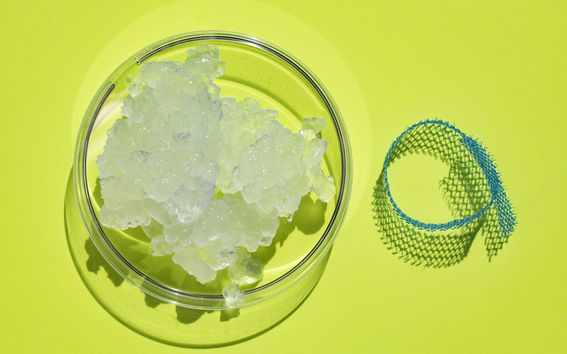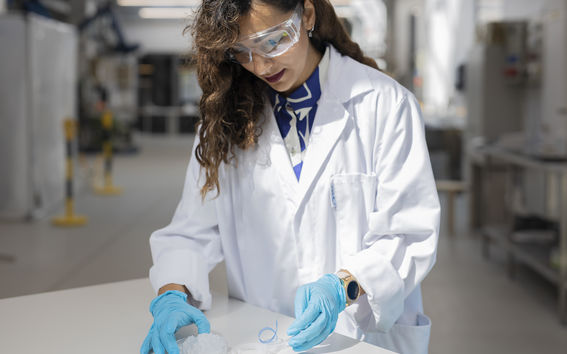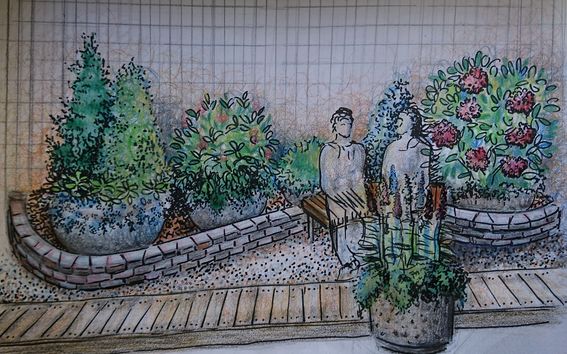Precision solutions for healthcare

Starting from the first year of elementary school, we’re taught to solve assigned problems, instead of being encouraged to find a problem worth solving,’ says Professor Heikki Nieminen, who is in charge of Biodesign projects at Aalto University.
The project sends teams of researchers and students to make on-site observations at a hospital for one month. The aim is to identify needs or problematic issues that could be addressed with medical technology.
‘The difference between an actual need and what we think is a real need can be slim. The central idea of Biodesign innovation is to develop a deep understanding of a need before even considering solution options,’ says Nieminen.
More than one solution can be developed for each need. They can be scrutinized from the perspective of, for example, regulatory processes, business or patenting.
The regulatory process for commercializing medical technology is expensive and can take years. Once a product is complete, you can no longer question the client’s need. If the definition of the need has failed at the very beginning, there will be no second chance.
Eventually, a single Biodesign project aims at addressing one single need.
Supporting weak tissues
The 2019 Biodesign team spent its observation period at the Women’s Hospital’s different wards and identified a total of 400 problems or needs requiring a solution. An operation to repair pelvic tissue damaged in childbirth with the aid of a prolapse mesh that was observed by researchers Jani Kuula and Eija Raussi-Lehto turned out to be decisive in determining the team’s choice.
‘The pelvic floor’s support structure is multifaceted and contains several thin layers of muscle. A baby’s head can just about fit through the bones of the pelvis when it rotates just right, but childbirth almost always causes damage,’ says head chief specialist, Professor Tomi Mikkola.
A common treatment is to attach a mesh made from polypropylene plastic to the vaginal wall to replace damaged tissue.
The United States Food and Drug Administration has reported on problems associated with polypropylene meshes as far back as the early 2000s.
The mesh can become fragile and break, which can cause the patient pain or discomfort. The material can also shrink, crack and cause inflammations.
Problems are associated especially with prolapse meshes attached via the vagina and, accordingly, their use has decreased. It has even been banned in some countries.
‘Postoperative complications can be due to a combination of the surgeon’s methodology and issues caused by the material. A key goal is to develop a better product and treatment for the patient,’ Mikkola says.

A safer material alternative
Polypropylene could be replaced by biomaterials. They are gelatinous and porous, while still having solid microstructures. They can also be pre-treated to suit the intended use. Although the mechanical properties of biomaterials are no match for polypropylene, researchers have confidence in their possibilities.
‘Biomaterials have already been successfully utilised for various biomedical applications, so it’s likely that they’re also suitable for prolapse mesh use,’ says researcher Rubina Ajdary, who works in the group of Professor Orlando Rojas.
The road to achieving a finished product is, however, long, and the corona spring slowed the progress of research. If the invention ends up becoming a product, it can significantly improve women’s quality of life and health. Hundreds of thousands of gynaecological prolapse operations are performed annually in the western world. Most often, the patients have given birth multiple times and are ageing.
Aiming for a recuperative environment
The spring was exceptional also for the Biodesign project that was launched this year. The team had just started its work and only managed to spend a short time performing observations – a week at Peijas Hospital in Vantaa and another week at the psychiatric outpatient unit in Tikkurila – before corona interrupted their work.
The team noticed the bleak rooftop terrace belonging to the psychosis unit’s closed ward at Peijas Hospital. This terrace might be the only place where patients get to be outdoors during their treatment period, the length of which can vary from a day up to three months.
Sometimes an outdoor environment can also make it easier to discuss difficult issues, but this opportunity has not been utilised much.
‘We wanted to make the rooftop terrace more comfortable and make it possible for all the patients and nursing staff to use it,’ says Innovation Fellow Salla Keränen, who lead the terrace project.
‘Understanding what the patients and nurses wanted was the starting point of our study.’
Because of corona, these needs were assessed electronically, in addition to which the initial designs were also done remotely by landscape architecture students Anu Hakola and Vera Rantalainen.
After seeing the rooftop terrace, they wanted to create a more stimulating setting that would make it more tempting to spend time outdoors.

Fingers in the dirt
The designers made use of the finding that plants are known to liven up the senses and inspire people to observe their surroundings. This can promote recuperation in stressful and traumatic situations.
We usually do a lot of designs on the computer, but this project was very practical. We got to draw by hand and had our fingers in the soil planting during the final phase. Building the wooden patio and a small masonry wall made the transition from design to realization concrete,’ Anu Hakola says.
Natural elements fade out the institutional look and may support recovery.
‘We want to provide patients with sensory experiences such as along the small path, where you can sit on a bench, take your shoes off and feel the different materials, like stones,’ says Vera Rantalainen.
Visual communication design student Milja Komulainen designed two murals for the rooftop terrace. Familiar nature topics, tranquillity and calmness formed the starting point for her designs. The survey had indicated that lake and forest landscapes pleased the eyes of nurses and patients alike. The patients in particular hoped that her paintings would incorporate natural elements like water.
Boosting communality
The resulting rooftop terrace design was influenced by many boundary conditions along the way. These were associated with, among other things, fire safety and load-bearing strength requirements as well as the choice of plants and furniture.
All water elements, for example, were discarded from the plan in the end.
‘The rooftop terrace of a psychosis ward would be a special location even without taking corona into account,’ says Head Nurse Tuomo Töhönen from Peijas Hospital.
‘The boundary conditions and safety related factors made the designing of this special environment challenging. In the end, I’m left feeling positive about being able to come up with a solution for most of the elements to soften the place,’ says Hakola.
The new, more comfortable terrace makes it possible to do things together. Some patients volunteered in the construction phase by carrying stones for the masonry work, screwing boards into the wooden deck and even by serenading the students with a guitar at the end of a long day of building.
‘The stage can host art, music and relaxation groups. And should the patients want to roast sausages, we can arrange a barbecue outing on the terrace, even in winter. Our department is large, and communality is important for us,’ Töhönen says.
From identifying a need to successful innovation
• The Biodesign concept was developed at Stanford University and brought to Finland by the late Professor Paavo Kinnunen and Professor Risto Ilmoniemi.
• The aim is to improve patient wellbeing, treatment outcomes and diagnosis accuracy.
• In Finland, the concept is being implemented by Aalto University, HUS Helsinki University Hospital, University of Helsinki and Metropolia University of Applied Sciences.
• By 2020, the concept has been implemented by six teams who have identified a total of 1 400 health care needs or problems.
• The first technological solutions are already being introduced into patient or home use.
• Four projects have received commercialisation funding from Business Finland. In all, the projects have raised €3.6M of which €2.1M is from Business Finland.
• Members of Biodesign teams have founded a total of six companies. SpectroCor, for example, specialises in heart surgery and Koite Health in home-administered dual-light therapy, Lumoral, that kills harmful oral bacteria.
• In spring 2020, researchers started looking for solutions to the corona crisis utilising an online survey initiated by Risto Ilmoniemi, Heikki Nieminen and Otto Olavinen. One project, EnviroSafe, received Corona Co-Creation funding from Business Finland. The project aims to develop an intelligent, virus-destroying disinfection method. The method could enable the safe disinfection of indoor premises even when people are present at the same time.
Text: Tiina Aulanko-Jokirinne.
Illustration: Kalle Kataila, Pihla Lemmetyinen, Anu Hakola, Vera Rantalainen.
This article is published in the Aalto University Magazine issue 27, October 2020.
- Published:
- Updated:
Read more news

Aalto University’s master’s programmes spark interest worldwide
Master’s programmes attract a diverse array of applicants from across the globe, representing 127 nationalities
Aalto in 2024: Love pictured in the brain, wooden crystals that make fashion shine, recovering minerals from wastewater and more
This year has been another feast of science and art at Aalto University
